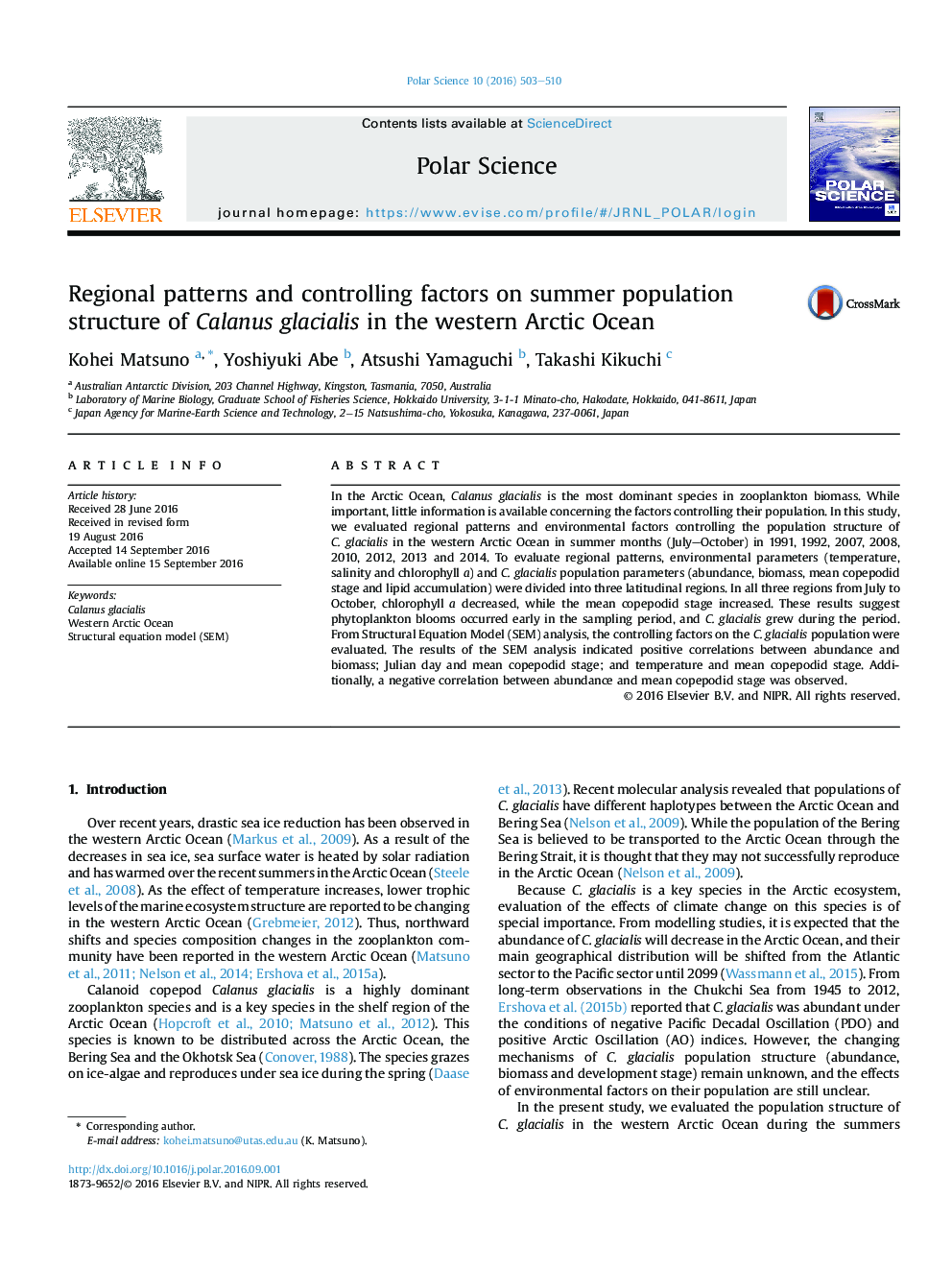| Article ID | Journal | Published Year | Pages | File Type |
|---|---|---|---|---|
| 6431520 | Polar Science | 2016 | 8 Pages |
In the Arctic Ocean, Calanus glacialis is the most dominant species in zooplankton biomass. While important, little information is available concerning the factors controlling their population. In this study, we evaluated regional patterns and environmental factors controlling the population structure of C. glacialis in the western Arctic Ocean in summer months (July-October) in 1991, 1992, 2007, 2008, 2010, 2012, 2013 and 2014. To evaluate regional patterns, environmental parameters (temperature, salinity and chlorophyll a) and C. glacialis population parameters (abundance, biomass, mean copepodid stage and lipid accumulation) were divided into three latitudinal regions. In all three regions from July to October, chlorophyll a decreased, while the mean copepodid stage increased. These results suggest phytoplankton blooms occurred early in the sampling period, and C. glacialis grew during the period. From Structural Equation Model (SEM) analysis, the controlling factors on the C. glacialis population were evaluated. The results of the SEM analysis indicated positive correlations between abundance and biomass; Julian day and mean copepodid stage; and temperature and mean copepodid stage. Additionally, a negative correlation between abundance and mean copepodid stage was observed.
